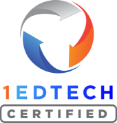Dr Linda Jaffray, School of Nursing and Midwifery Doctor of Philosophy from University of Tasmania on ‘Empowering a new relationship with ‘Feedback’ in Nursing Student Placements’. This recording is from our 2022 Melbourne, Australia MiniBash community event. Videos are for educational personnel only and require a live educational email to watch. You can read the video transcript below.
Transcript:
So I would like to talk today about student feedback within the setting of nursing geo placements.
So at the University of Tasmania, we call this PEP, but it’s very crucial at greater learning and clinical placements.
But more specifically, I’d like to share how PebblePad has enabled us. Not only to develop a comprehensive professional digital resource providing feedback to students on placements.
But how that has enabled insights for us into the difficulties that many students’ experience receiving feedback and responding to feedback, and how these insights enabled through PebblePad and through the Atlas reporting functionality has led us to initiate a range of quality improvement initiatives.
So just for some background, the bachelor of nursing at your tools and the best students must complete five placements over their degree. To obtain the minimum eight hundred practice hours required by Opera for registration as a registered nurse on graduation.
Prior to twenty twenty one, student assessment in PEP was undertaken completely by a paper based PEP workbook, passed between the student, the supervisors, preceptors, then back to the university, through being scanned and uploaded.
So, obviously, there was lots of limitations within this. The inefficiency difficult to read, lost, or forgotten workbooks, and that inability to respond in real time to issues of progression. It’s not until you get workbook at the end that you go, I wish I had known about that to be of support during.
And the difficulty verifying who completed and verified those learnings within placement.
The other limitation for us was that we had limited ability to analyze performance across whole cohorts.
So we decided to transition to using digital assessment in prep by a co pay in twenty twenty. And this works if it costs a minor period.
And that involved the employment of a project manager, which was myself.
Exensive consultation and relationship learning in our external I cannot emphasize that.
It’s the process you wrap around the product. That is so important.
It was collaborative co design approach, significant amounts of education and training, and that continues because we have high turnover of nursing facilitators and preceptors.
User support’s been really critical, so we established a dedicated email and phone support that’s service by myself and an educational technologist.
And we’ve been very clear that we’re ongoing we’re developing this in relation to feedback. So we’re getting that feedback from our practice partners and students and academics all the time and altering our processes accordingly.
So all this occurred in the context of COVID nineteen, high levels of stakeholder stress change fatigue.
Varied levels of digital literacy and rapidly changing education and healthcare environments.
So you can see why I’ve gone a little ways in that process.
I’m not going to go through the workbooks in detail today because I want to talk about how we’ve leveraged this to get inside into some of the the things we can do to improve within the degree.
So we’ve got five workbooks that each got the same structure but that calibrated to the increasing expectations and scope of practice for each pep.
Each time a unit runs, their pep workbook for that unit is administered through a separate workspace, and we managed eight workspaces in this last year.
We have fourteen pepper rotations a year, and many of them run concurrently. So we’ve got three different placement periods happening at the moment.
And this year, we’ve supported, you know, over three thousand seven hundred stakeholders to access and use PebblePad.
So they’re big numbers when we didn’t have a digital workbook, and we weren’t using PebblePad less than eighteen months ago.
Repeat workbook has been designed as a comprehensive feedback resource, and the intention is that students engage with the workbook as an empowering structured feedback resource to help them develop competency and demonstrate that to others.
There’s a range of assessment activities the two biggest being the the interim and final review, and they have two components. So student self assessment activity tails into what we’ve been talking about today, that ability to reflect on their strengths, and ability to think about the areas for improvement, and how they’re going to do that.
The other big assessment component within that is the handset tool, where students are assessed against the Australian nursing standards.
And we’ve constructed that in pebble pad using a combination of written feedbacks rubric items and a global rating scale.
What this has enabled us to do is for the first time be able to leverage some of that data analytics.
So not only can we have a look at what’s happening in real time, but we can use that to initiate other activities.
And that was exciting for me in terms of having a research background in a curious mind.
And I’ve been hearing reoccurring themes from our healthcare providers, from our from our students themselves and their academics and professional staff, but students were struggling with receiving and responding to feedback.
And when you’re in there and you’re playing around in the in the Atlas workspace and monitoring that student assessment, you can see the commentary You can see the scoring and say something was saying to me what’s happening in this space around feedback.
So I wanted to know more.
So I decided to review the assessor feedback data at interim review, and I chose the PET4 cohort and there were two zero three students in this cohort, so they were in their second last placement block.
I looked at the ansat assessment, and they’re assessing that against seven national standards, each of which have multiple criteria.
A failure to meet the satisfactory standard of three on any other criteria results in assessment of not meeting standard at that particular time.
That would trigger a student support plan, and we’d work with students about the strategies to get them from one standard to where they need to be by the end of Pep.
In terms of the process, many of you I’m assuming we’ll have used the Atlas reporting function to have a look at what’s happening within student workbooks.
So go into the work base, select the submissions range from report, and that extracts all the data from all the workbooks into an Excel or SCB file, and then enables us to have a look through what’s happening in this cohort at this particular point on this assessment.
And what did I find?
Over two zero three students, there are seven that failed to make agreement satisfactory standard at that interim review. It’s a small number.
Among those seven students. There were twelve instances in which a criteria of the ANSWAT wasn’t met, so there were some students who failed to meet more than one criteria.
And when I looked into what criteria that both were related to, five of those twelve instances forty-one point six percent was around the difficulties that student have in terms of accepting and responding to feedback And to me, that was interesting because we’re talking about our fourth year, almost, you know, one more placement to go. And feedback was an issue in terms of them being assessed to satisfactory.
All those students with the support had passed the final pet, so there’s only one out of that cohort that didn’t.
So what did we do with these findings? Because, you know, data’s data, unless you’re gonna use it to make improvements. So what we did was We fed this information back to our unit coordinators and PEP staff who are a dynamic team, and they were really keen to look at what we could do as a collective.
To support more effective student engagement with feedback.
So the first initiative was to look at student experience and perspectives of feedback. What was that like for them? And not assuming that they have the same reference point that we do.
They did this through an online survey and an in person class discussion to try and unpack that student experience.
And they began with their first year pep students.
And they found overwhelmingly that students deeply personalize feedback as a sense of failure.
The comments that they put up surprised me in terms of how personal and how big some of their reactions were to that.
We identified that we needed to address and reframe how students perceived feedback as the first step, and then look at more explicit teaching and support about the function of feedback and and how they might engage with that. Because the whole workbook in Pebel pad is a feedback resource so students are struggling to receive feedback, we have we have an issue we need to work through.
The unit coordinator success fully proposed a change to the unit increasing the teaching intensive time to explicitly teach the function value and structure and skills of effective feedback And they’re in the process of developing a new peer feedback assessment form in pebblepad to start teaching explicitly those. Those skills.
We’ve also undertaken a body of work to enhance student engagement with the pet workbook as a feedback resource.
Because students are often very focused in high stressful situations of meeting the requirements, but it can feel like a bit of a tick and flick experience as opposed to really settling into the deep learning that can happen, which is what we’ve heard beautifully from our students today. So we know that students are very engaged with the ideas of stories.
Again, I heard the words around narratives today.
And they’re more likely to prefer that that digital video based information and resources to support the learning and the power of stories.
So we’re looking to reframe and model a professional approach to engaging with feedback that’s co designed with practice.
Which is a really innovative sort of space that we’re heading into.
We’ve also seen that there’s huge opportunities to use the PebblePad findings towards more targeted professional development sessions for our facilitating network to increase their confidence and capacity to deliver effective feedback.
And one of the resources that they’re really interested in is having access to a bank of de identified written feedback exemplars from Pebelpag in terms of how do you frame feedback?
So their engagement with us and the product is really interesting and moving forward.
So all these initiatives have been communicated with and involve collaboration with practice. We can’t do it without them, and we’re not doing it to them. That’s been a key part of our success of being able to move those three thousand seven hundred people from from paper based into this digital approach has been that relationship and that that development.
So this is only the beginning.
Of us in our PebblePad journey really and the reporting functions that we’re excited about how we can use Not all they need the product or the insights we gain to drive that change in curriculum and quality improvement.
So thank you.




